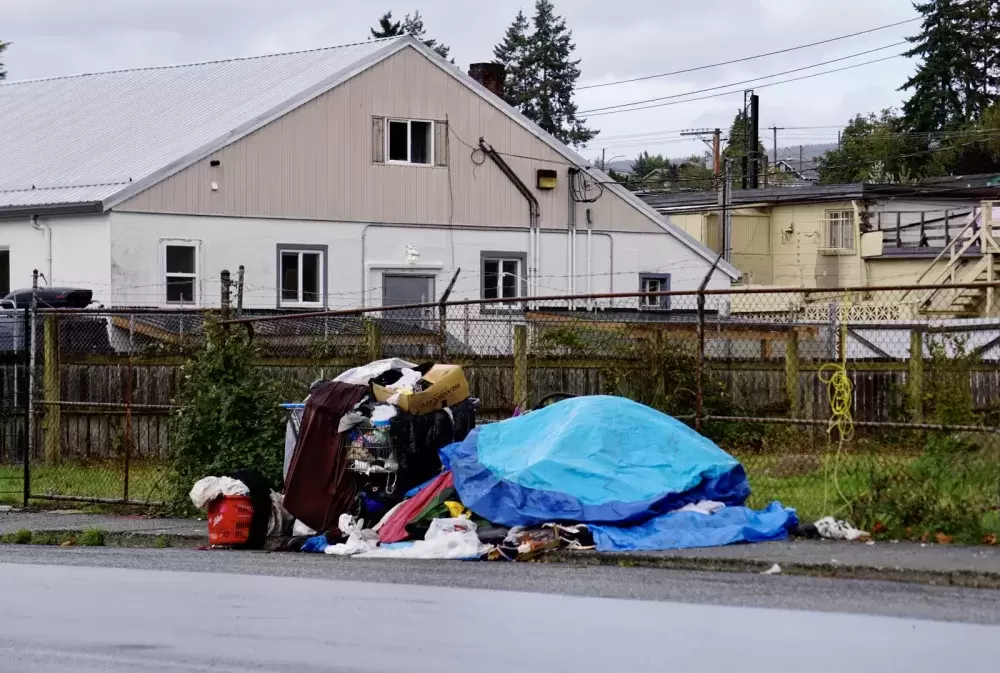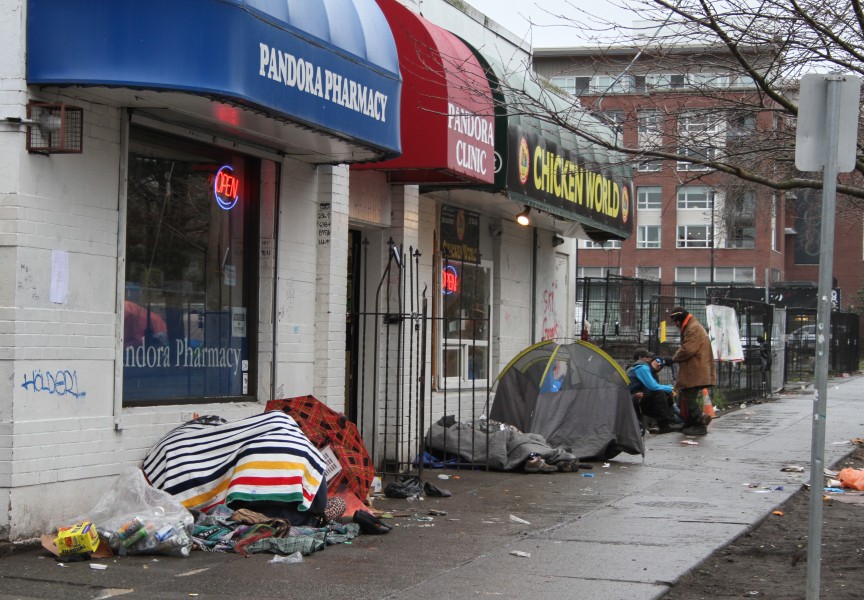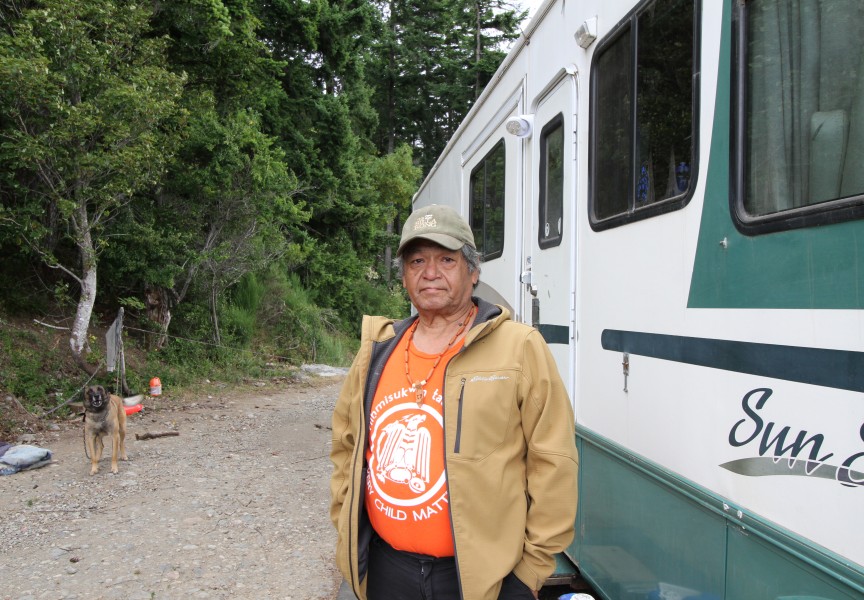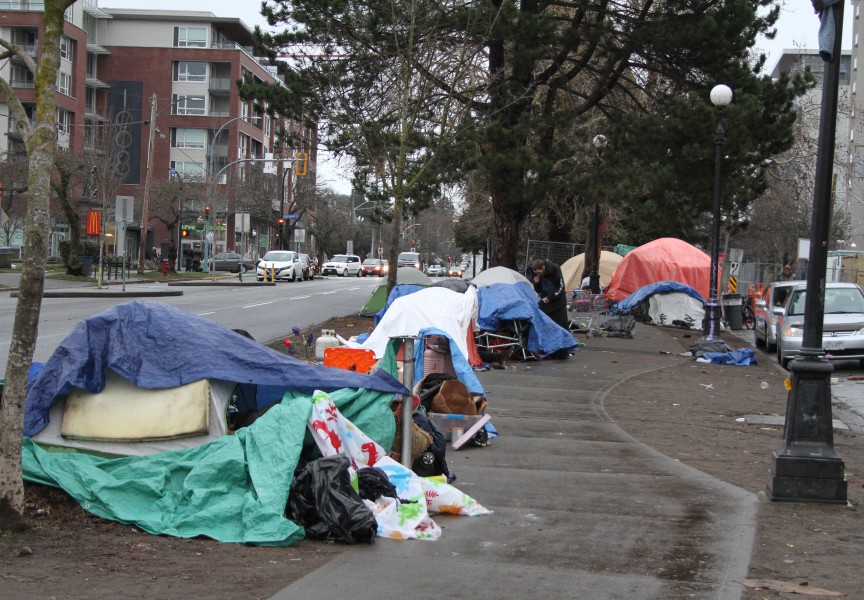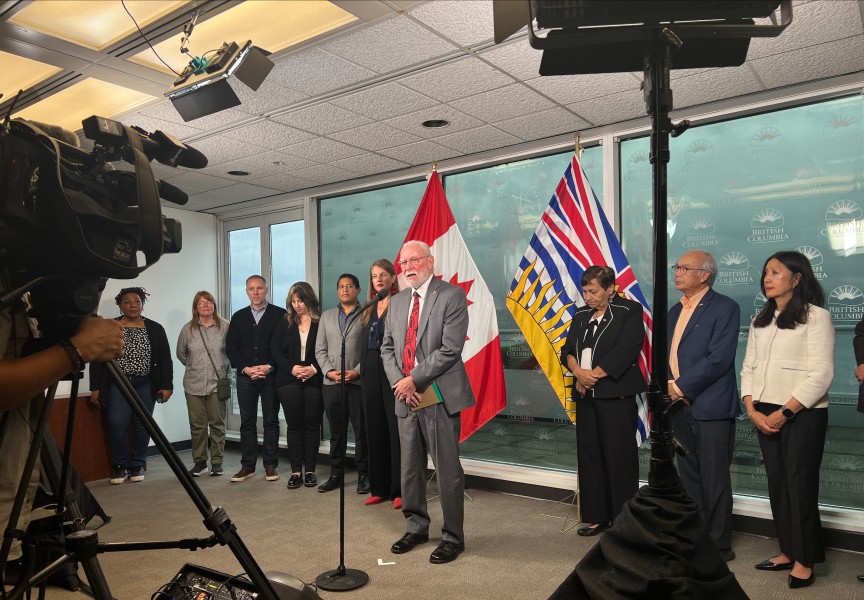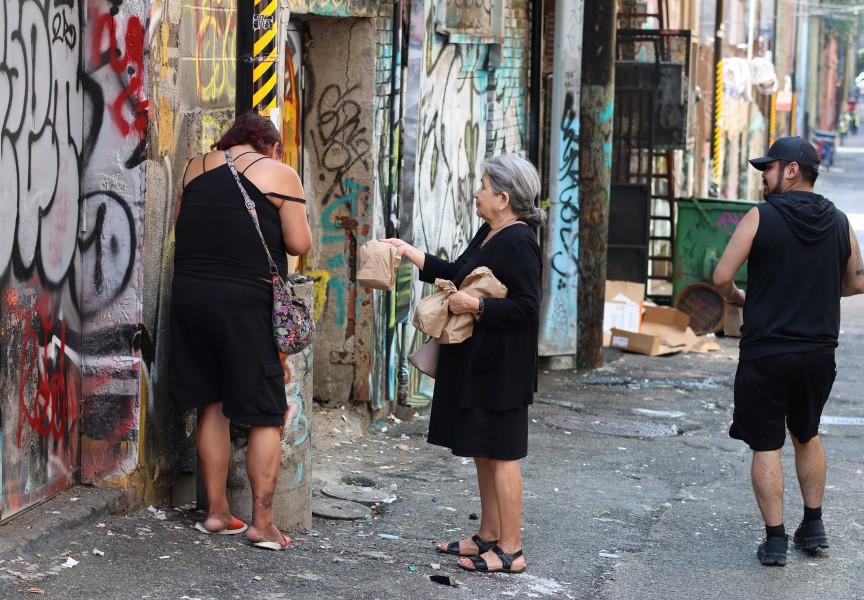Port Alberni’s 2021 homeless count shows a drop in the number of individuals who identify as homeless, but of those, a significant increase was reported in people who identify as Indigenous.
Marcie DeWitt, Alberni-Clayoquot Health Network coordinator, told Port Alberni city council on Sept. 27 that this year’s 24-hour homelessness count recorded 125 individuals who identified as homeless, both sheltered and unsheltered. This is down from the 2018 24-hour count that saw 147 homeless individuals.
“One of the things that I did really want to emphasize…is that although we did see a decrease in our numbers, we saw a big increase in the vulnerability of the individuals that were counted, so that was one of the most notable things that jumped out at me when looking at the summaries from both years,” DeWitt said.
She added that individuals that identified as Indigenous went up from 48 per cent in 2018 to 65 per cent this year. That is compared to 17 per cent of the general population who identify as Indigenous.
The 2021 tally included a night and day count done by service providers and outreach workers. Volunteers weren’t available this year due to the COVID-19 pandemic.
DeWitt explained that the night count consisted of counting anybody who might be in a sheltered bed, at a hospital, shelter, jail, detox facility, transition house or at any of the community housing partners. During the day, outreach workers would go to areas that are known to have homeless individuals gather, service organizations and to any programs that are actively seeing clients.
Sheltered homeless individuals are defined as people who do not pay rent and don’t have a place of their own where they could expect to stay for more than 30 days. Unsheltered homeless individuals are those living outside, including in alleys, doorways, parkades, tents, parks, vehicles or couch surfing.
Data coming from this year’s count showed 11 per cent of those who identify as homeless have been experiencing homelessness for under six months and 73 per cent for one year or more. Ninety-five per cent of individuals that identified as homeless have been living in the community for at least a year and 73 per cent of those had been in the Alberni Valley for 10 or more years.
This year’s data saw an increase to those identifying as seniors, up to 18 per cent from 10 per cent in 2018. Nine per cent of respondents identified as youth (under age 25) and 74 per cent were adult (age 25-54).
Fifty-seven per cent of respondents reported they experienced homelessness for the first time as a youth and 60 per cent had been in foster care, a youth group home or under a youth agreement.
Fifty-five per cent of respondents disclosed substance use issues as a reason for housing loss, 41 per cent said not enough income, 25 per cent disclosed mental health issues and 25 per cent reported an issue with a landlord.
“We saw an increase in reported amount of health concerns, so 58 per cent in 2018 reported that they had two or more health concerns and then in 2021 we saw 81 per cent of individuals presenting with two or more health concerns,” DeWitt said. “We saw a lot less people who had employment income and a lot more individuals that had been looking at income assistance and disability benefits so that was a bit of a shift there.”
The top five reported health concerns by respondents were addictions issues at 88 per cent, mental health issues at 61per cent, medical conditions at 50 per cent, physical disabilities at 44 per cent and 33 per cent of individuals reported a learning disability.
Port Alberni Mayor Sharie Minions said what stood out to her most about the data was the percentage of today’s homeless population that either grew up in the foster care system or was homeless for the first time in their youth.
“It really highlighted for me how important it is to be investing in our young people and looking for opportunity to prevent homelessness 10 years earlier than we kind of often think of taking care of homeless people today,” Minions said. “I think we really need to be proactively investing in the young people in this community as a way to really prevent the homeless challenges of the future, so yeah it was a heartbreaking number for me to see but I think it really speaks to the systemic challenges that we have in the community and that the population struggles with.”
Later during the meeting, city council allocated $44,500 in funding from the Union of BC Municipalities to increase programs for young people at the Gyro Youth Centre.
DeWitt working on a poverty reduction action plan for the Alberni Valley. She said some recommendations she has to help combat the homelessness issue include having more diverse programming and looking at ways the city and service providers can bring different approaches for individuals.
“We do need a diversity of services to meet peoples’ needs, our current services don’t meet everybody’s needs,” DeWitt said. “And then looking at the ways we’re supporting our whole population, so really looking at our early interventions, how we’re supporting youth, how we’re supporting families as well. We can’t just look at emergency housing, we also have to look at housing for those individuals that are working. How do we keep people in their houses, how do we help them move from rental into ownership?”

